New Zealand will be battling against the Netherlands in a FIFA Women’s World Cup Group E clash on Tuesday.
New Zealand have quite a long history in the Women’s World Cup, qualifying for the fourth time in a row. The Football Ferns qualified for the first-ever FIFA Women’s World Cup in China in 1991. After failing to qualify for the next three editions of the World Cup, they finally earned their place again in the group stage in 2007, coincidentally when China were again the hosts.
Meanwhile, the Netherlands are bringing a squad full of household names and exciting talents. And although this is only their second time qualifying for the group stages of the Women’s World Cup, many are already expecting them to force their way into the latter stages of the competition.
This tactical analysis will give you just a slight peek of how the game might unfold on Tuesday.
Both teams potential setup – tactical analysis
New Zealand
Tom Sermanni’s system of choice oscillates around 4-3-3, 4-2-3-1, 4-1-4-1, and 3-5-2. Statistically, his most successful formation is 4-3-3 which is highly likely to be used on Tuesday.
Goalkeeper Erin Nayler is an irreplaceable player between the sticks and should see her name in the starting line-up in the upcoming game.
At the back, we may see the partnership of Abby Erceg and Meikayla Moore at the heart of the defence. On the left side of the back, Ali Riley should be starting. On the opposite side of the flank, New Zealand have the likes of Katie Bowen, Ria Percival, and CJ Bott all available to occupy the post.
In the midfield, Annalie Longo and Betsy Hassett will team up as the central midfielders. Either Percival or Bowen could start as a defensive midfielder between the previous two.
Up front, Rosie White and Sarah Gregorius are regulars in Sermanni’s side and could start against the Netherlands. The former usually plays on the right wing, while the latter is the main choice for the striker spot. On the left side, Emma Kete and Hannah Wilkinson each have a chance to start in the upcoming game. Riley could also start on the left wing giving Anna Green the chance to play as the left-back.
Netherlands
The Netherlands could line up in their usual 4-3-3 formation. Left-back Kika van Es had an operation on her hand last week after an injury she suffered in an international friendly against Australia. She resumed training just four days later, albeit separated from the group. There are some doubts that she’d start against New Zealand but she’s making good progress.
Sarina Wiegman, of course, has several players in her squad ready to step up to the task. Merel van Dongen could be the go-to player in this case, although Dominique Bloodworth is also available.
Desiree van Lunteren is surely going to occupy the right-back berth, but as for now, the centre-back pair are still uncertain. Both van Dongen and Bloodworth could also play as the centre-half duo, but Wiegman also has several very capable options at her disposal with names like Stefanie van der Gragt, Anouk Dekker, and Danique Kerkdijk all ready to step up.
Goalkeeper Sari van Veenendaal is on top form and should be ready to start ahead of a more experienced Loes Geurts and youngster Lize Kop.
The midfield three of Jackie Groenen, Sherida Spitse, and Danielle van de Donk are expected to start. Meanwhile, the dynamic trio consisting Shanice van de Sanden, Lieke Martens, and Vivianne Miedema will be haunting the Ferns’ defence on Tuesday.
Will New Zealand be able to weather the storm?
The Netherlands tend to play out from the back, but they’d try to move forward rather quickly. They place great emphasis on moving the ball vertically with the centre-back often opting for a longer distance passes whenever they see teammates making a run into space.
Wiegman’s side love to play and attack from wide areas, as we shall see in this tactical analysis. With van de Donk often shifting to the side and Groenen playing the role of that similar to mezzala (half-winger), they are often able to rotate the ball rather easily on either flank. Meanwhile, Spitse plays a key part while holding her position in the middle of the field. Snuffing out a potential counter-attack, recovering and recycling possession, and even exercising her chance creating ability by delivering defence-cutting through passes from around the middle third.
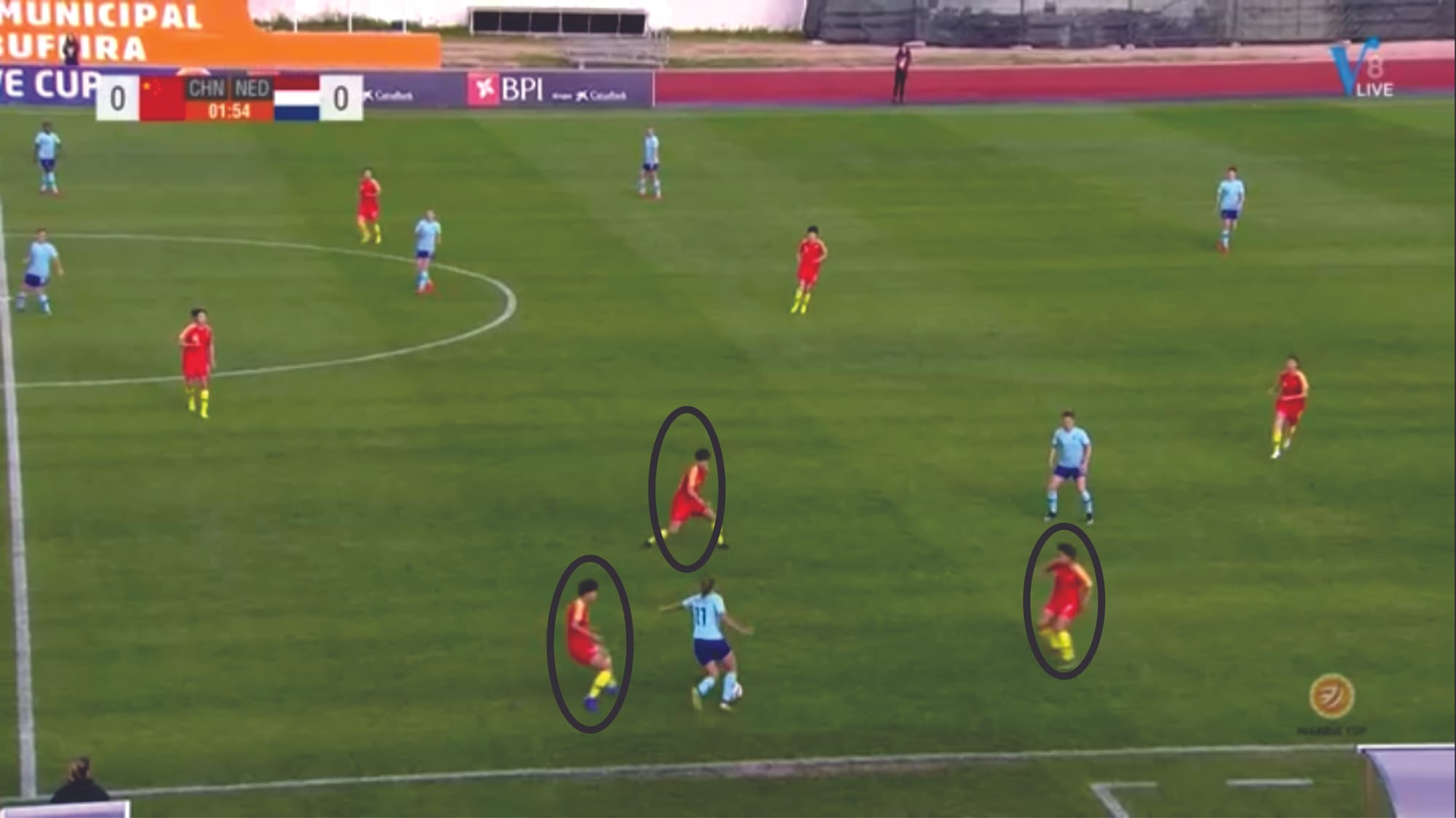
With the likes of Martens and van de Sanden terrorising the flanks, the Netherlands’ attacks could be extremely hard to handle at times. But it is of course not impossible. Let’s take a look at the picture above.
China created an overload on the flanks, pressing and marking the passing lane to isolate the ball carrier. This way, the persistent China side could limit the threats on either flank considerably.
Though mostly playing a rather patient, possession-based game – the Netherlands are always quick to exploit any gaps in the defence. They’re quick on the break and will punish any team that are unable to transition quickly into their defensive phase.
New Zealand are a team who defend with a mid-low block. They mark zonally and press only after opposition backpass or on heavy touch. They maintained a rather wide shape when defending.
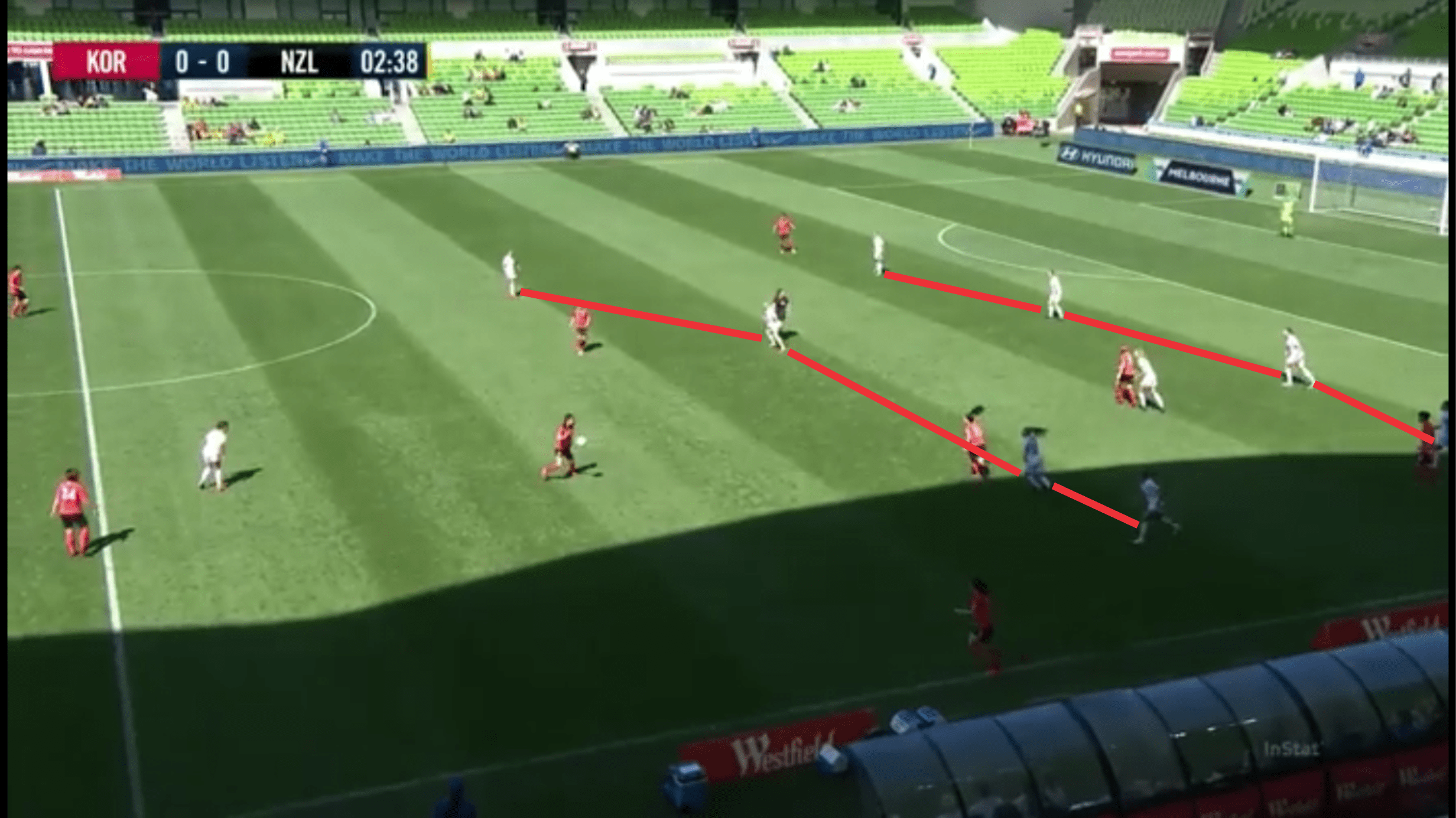
New Zealand form two banks of four in defence with wingers dropping back and forming a 4-1-4-1 formation.
They are quite compact and there’s not much space to exploit between the lines. But the wide positioning between players means that there are still gaps to exploit. Especially in central areas.
What could the Netherlands do to anticipate the attack?
When playing against a team who rely mostly on the flanks, it would be smart to create an overload and restrict their spaces out wide, as this tactical analysis shows.
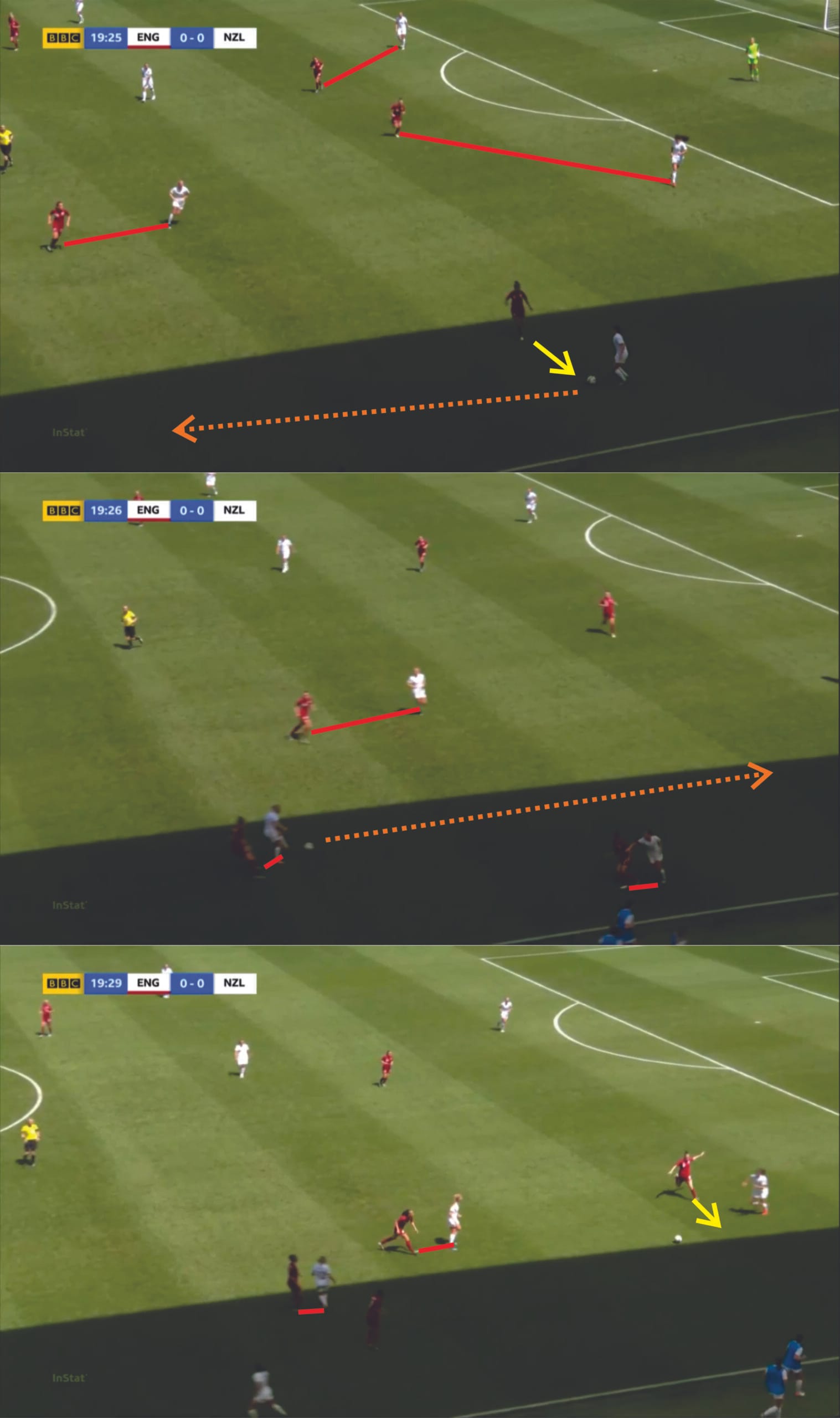
The pictures above were taken from New Zealand’s international friendly game against England recently. In this match, England pressed high and tried to win the ball from as high up the pitch as possible.
Knowing that Sermanni’s team tend to play from wider areas, England women’s coach Phil Neville instructed his side to create an overload when the ball’s on the flanks.
De Oranje Leeuwinnen will profit largely from this strategy if they are to apply it in their upcoming game.
Exploiting the weakness(es)
Both teams have similar tendencies of playing out from the back. Yet, both also have similar vulnerabilities that can be exploited.
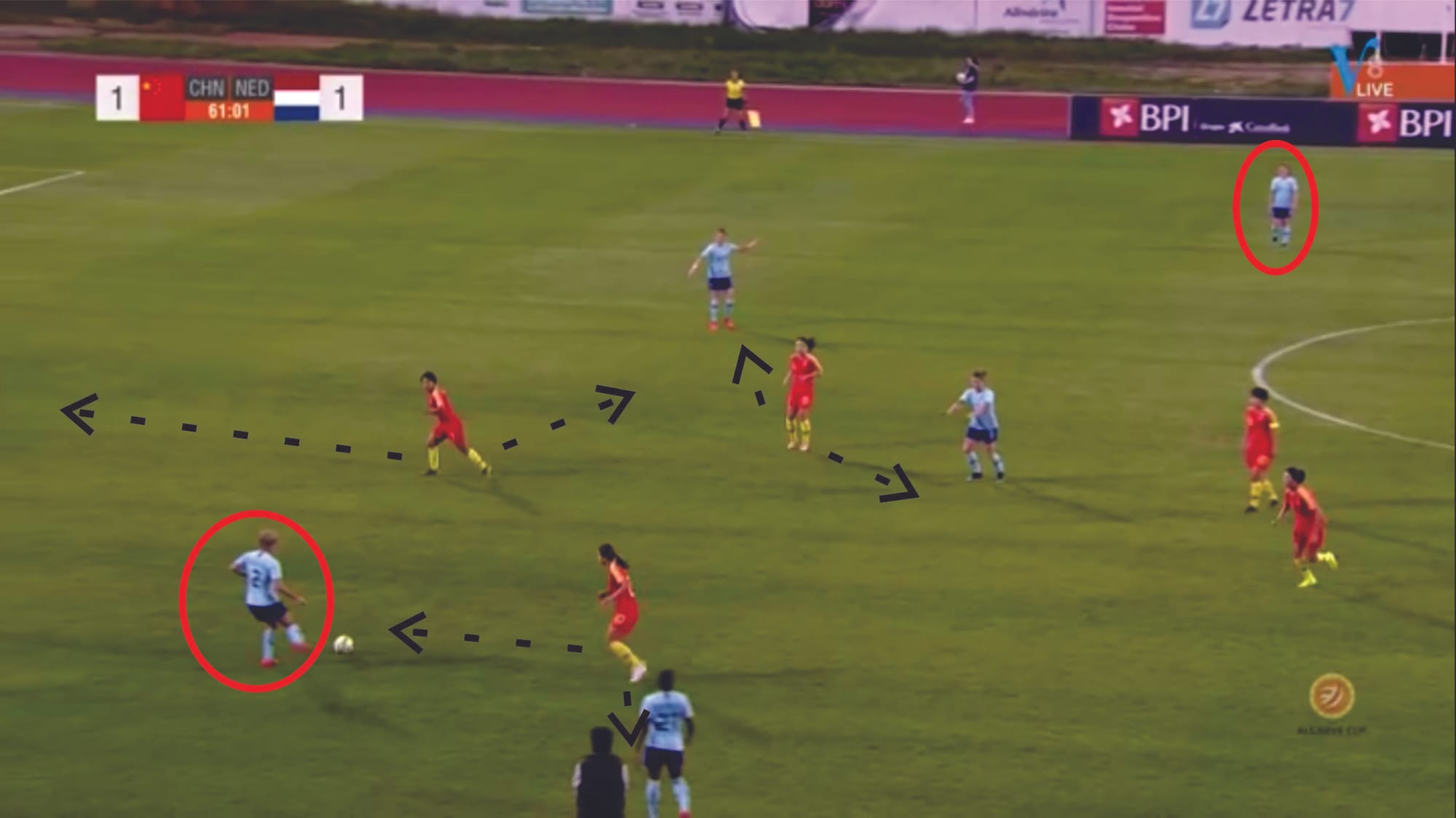
Here we can see the Netherlands trying to play out from the back. China blocked high and closed down the ball carrier while marking the passing lane. Bereft of any short passing option and under intense pressure, van Lunteren decided to play it long onto the other flank for slightly minimal risk.
Wiegman’s side didn’t play well under this intense pressure and would often rush forward with a long ball instead of working their way up patiently. Often they would also concede dreadful mistakes in important defensive areas.
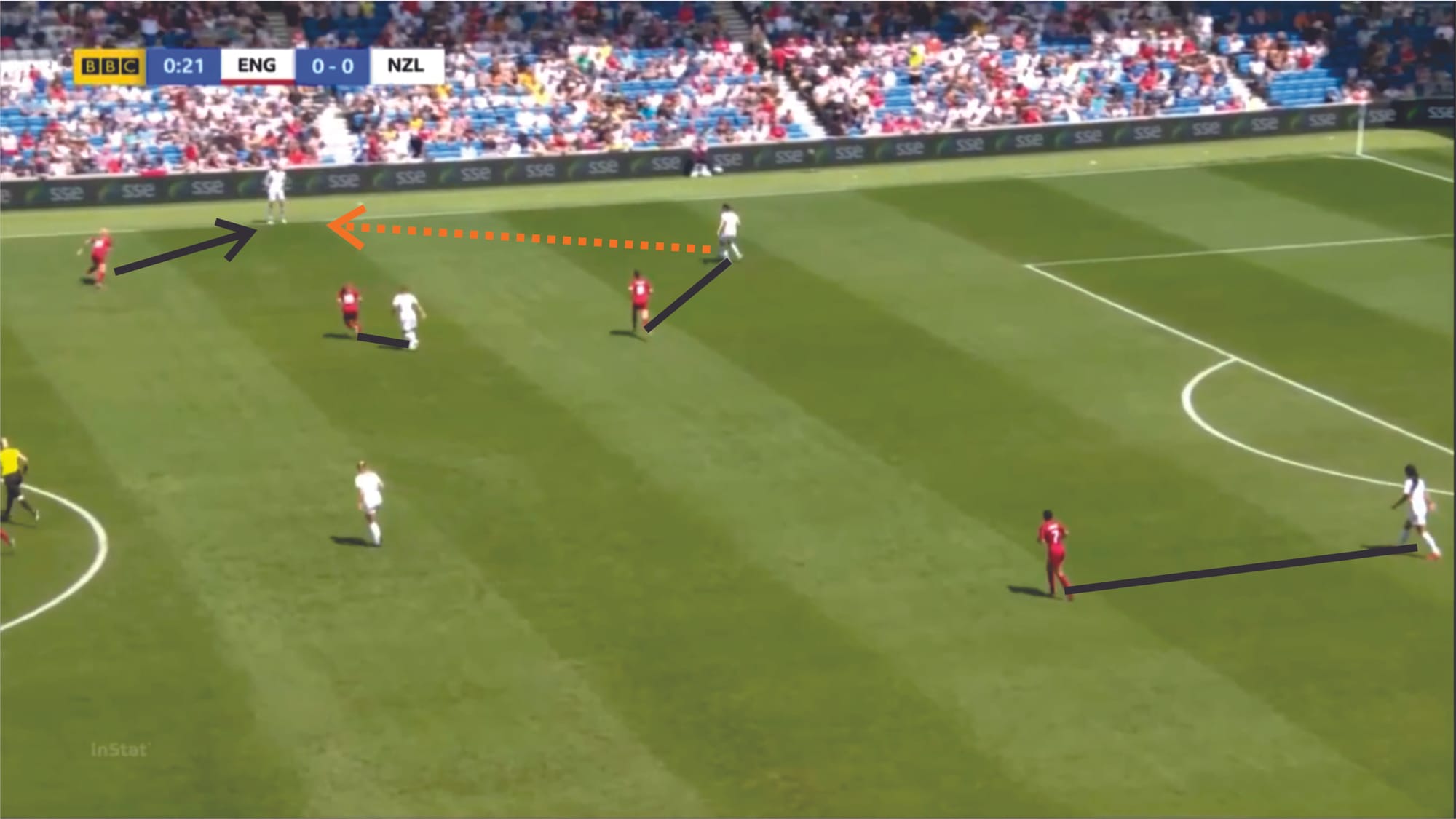
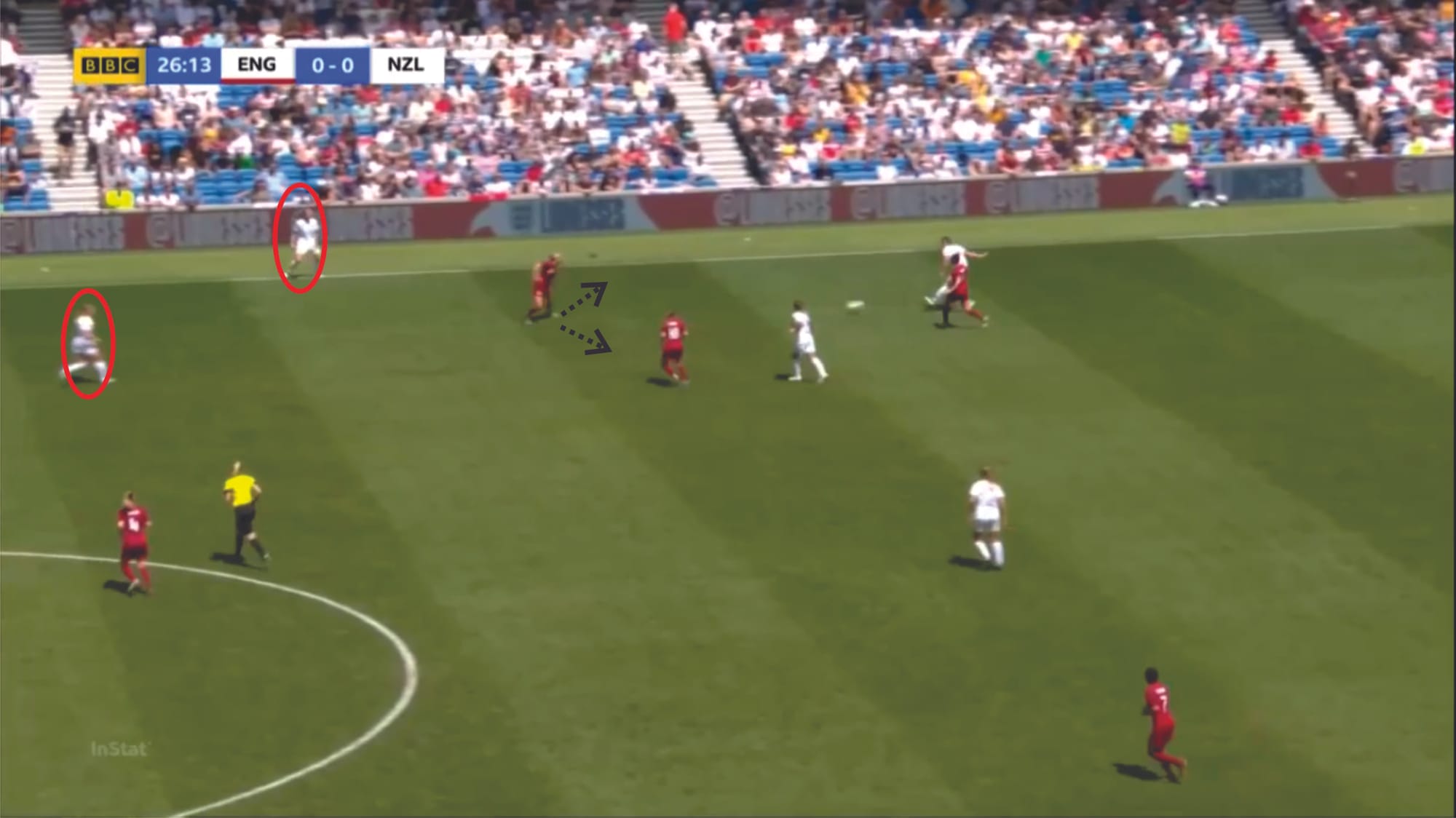
A tactical analysis shows that New Zealand are also vulnerable when receiving pressure at the back. In the picture above England were blocking high and man-marking. But they didn’t press the centre-backs. Instead, they’d drive either of the centre-backs to bring the ball wider and then isolate them.
In this game, England only marked the full-backs and would only press when the ball’s played in wider areas. The England strikers didn’t press the centre-back and seemed to try to cut their central passing options. This left the centre-backs with the option to loft it forward or to dribble the ball themselves to try to exit the pressure.
Most often, the Ferns’ centre-backs tried to bring the ball wider to try to open up some spaces. But as you can see, they often ended up being inside a pressing trap.
Relevant statistics
The Dutch are in fine form as of late, especially in front of goal. They have notched up three wins, a draw, and a loss from their last five matches. They’ve scored 13 goals while conceding only two in the process.
The Netherlands have collected an average of 3 xG from around 10 chances created per game while managing to convert 2.6 (26%) goals in their last five games. This shows how they are really an outstanding team when it comes to creating chances, but perhaps could be more effective inside the box.
Wiegman’s side tend to play in wider areas. They recorded an average of 37 attacks coming from the right side, 31 from the left, and 22 from the centre. Despite that, stats do show that they are most effective when breaking through centrally with 21% efficiency in attack.
New Zealand, on the flip side, are not very productive in terms of chance creation. With an average of 3 chances created per game, they’ve scored around 0.6 (20%) goals from a 0.4 xG.
Sermanni’s side love to play on the counter. From the last five games, they averaged 11 counter-attacks and only 54 positional attacks. They loved to play on the wings with the right wing being their slightly favoured side. Around 25 attacks come from the right side, 23 come from the left side, and 18 from the centre.
Conclusion
Unlike the Netherlands, New Zealand have a lot more experiences when it comes to playing in the group stage of a Women’s World Cup. Unfortunately, though, the latter have never been able to progress past the group stage.
Their counterparts, on the other hand, have only qualified once prior to this edition. And more impressively, they managed to finish in a quite impressive position having been defeated by the relentless Japanese team in the round of 16.
The Netherlands are no doubt going to be big favourites to come out on top against New Zealand. De Oranje Leeuwinnen have overall superior qualities compared to New Zealand. But unless they’re able to set their play up properly and convert their chances effectively, the Netherlands could face some very difficult periods in their upcoming game.
If you are following the FIFA Women’s World Cup 2019 then you will find our FREE tactical preview magazine the perfect compliment to the tournament. You can download it HERE – each nation is previewed and we also profile their key player and young player to watch. Enjoy!

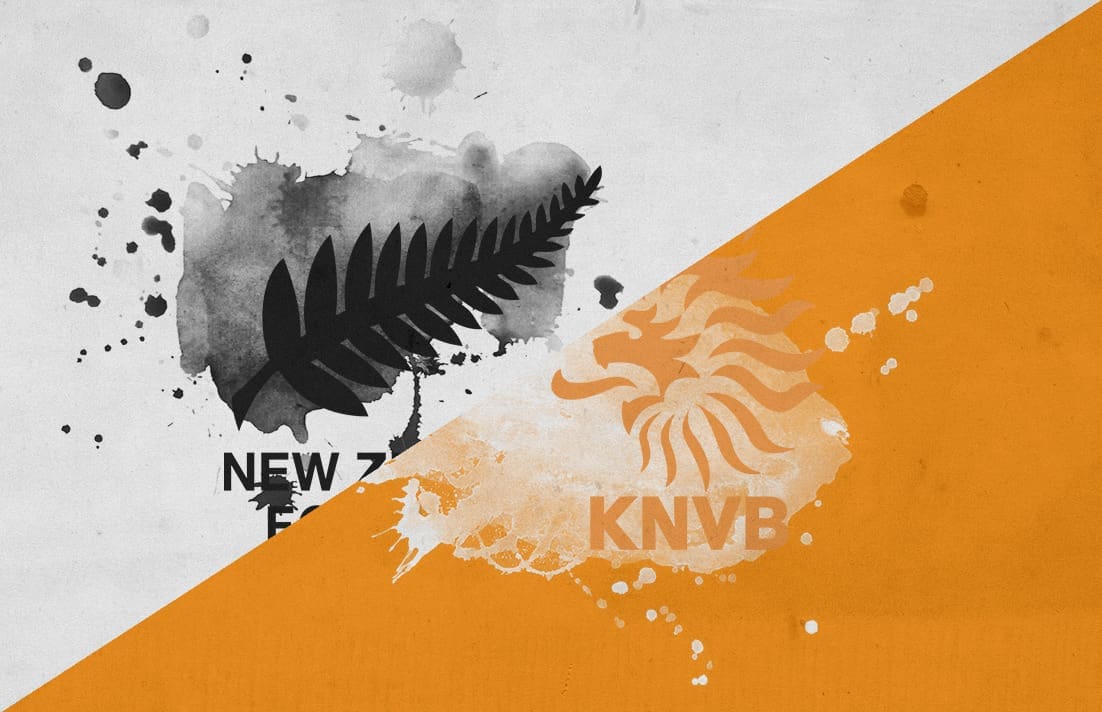



Comments